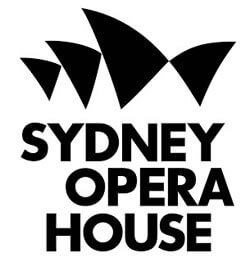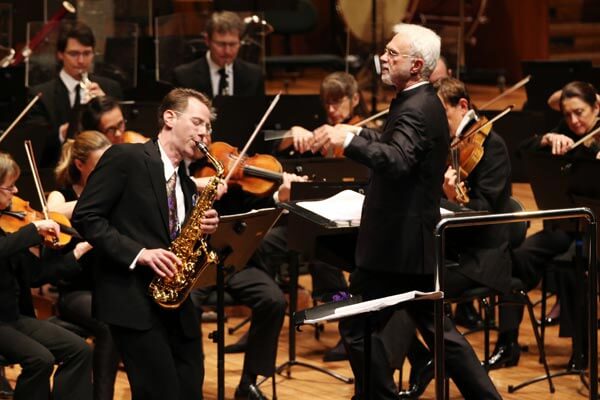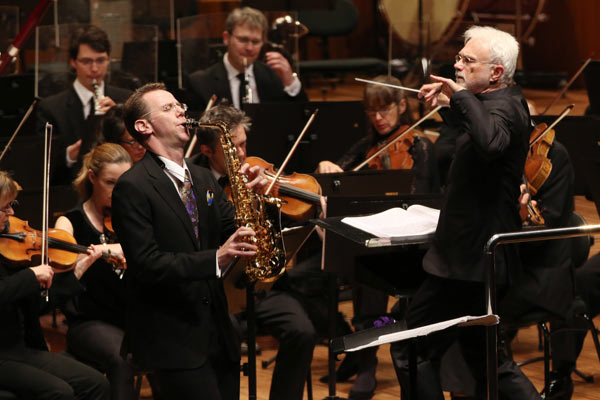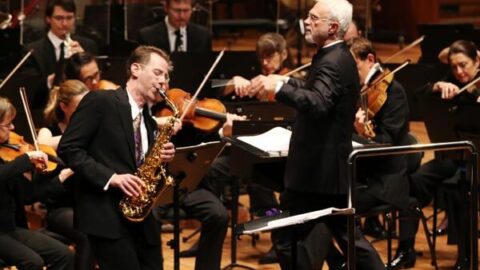 By now, John Adams’s status as a (if not the) major American voice in orchestral composition has long been solidified. The “John Adams style” is remarkably consistent and ubiquitous; it’s a style imitated by many composition students in their pieces, and has its fans and detractors. John Adams’ Saxophone Concerto was premiered by the Sydney Symphony Orchestra with Adams himself conducting and American saxophonist Timothy McAllister as soloist on August 23, 2013 at Sydney Opera House Concert Hall. This latest work is a piece consistent with what one expects from an Adams composition: vibrant rhythmic interplay, an idiosyncratic approach to triadic harmony, and the gleam of that signature John Adams orchestration.
By now, John Adams’s status as a (if not the) major American voice in orchestral composition has long been solidified. The “John Adams style” is remarkably consistent and ubiquitous; it’s a style imitated by many composition students in their pieces, and has its fans and detractors. John Adams’ Saxophone Concerto was premiered by the Sydney Symphony Orchestra with Adams himself conducting and American saxophonist Timothy McAllister as soloist on August 23, 2013 at Sydney Opera House Concert Hall. This latest work is a piece consistent with what one expects from an Adams composition: vibrant rhythmic interplay, an idiosyncratic approach to triadic harmony, and the gleam of that signature John Adams orchestration.

The programming of the two premieres on this concert, the Australian premiere of Adams’s Violin Concerto and the World premiere of the Saxophone Concerto, was undoubtedly done as a way to compare the two pieces. The Violin Concerto is in classic(al) three-movement concerto form, complete with cadenza at the end of the first movement. The forces are smaller, owing to the solo instrument’s comparatively limited capacity for volume, but the concerto still employs two percussionists and the pair of synthesizers common to Adams’s works. The Violin Concerto is heavily influenced by Adams’s Chamber Symphony, not so much in the surface details, but in the choices of the harmonic language. The lyrical melodicism of the violin solo in the concerto transforms the Chamber Symphony’s jittery exterior. It almost feels apocryphal, like a reading of the same material from a different author.
The Saxophone Concerto is in two movements, but in reality, it closely resembles a three-movement concerto form. The first movement begins quickly, and slowly becomes more lyrical, before rudely being interrupted at the end. The second movement is a white-knuckle barrage of figures from the soloist, punctuated by muted brass, piano, and strings. Adams eschews the synthesizers for a piano and celeste in this piece. Even more striking is the absence of percussion entirely, despite a larger complement of strings to match the carrying power of the saxophone. In the same way that the Violin Concerto references the Chamber Symphony, the Saxophone Concerto largely feels like an addendum to Adams more recent large-scale work, City Noir. Adams spoke about his influences in the piece being jazz greats like Stan Getz and John Coltrane. While these influences are certainly felt, they are uniformly distributed into Adams’s own signature sound. Bop textures fit well into Adams’s vocabulary, and he serves them up with the same kind of meted control that is de rigeur for his works. It is difficult to tell whether these influences are new ones to him because they are employed so organically. They sound as though they have been there are all along, called up to the surface of his music only now.
Both violinist Leila Josefewicz and saxophonist Timothy McAllister gave incredible performances this evening. The demands on the soloists in both pieces are similar: nearly constant playing, long (LONG) phrases, and sections requiring pure athleticism. McAllister was the eye of a storm in his performance, delivering endless cascades of notes with Zen-like control, and acrobatic grace. Josefewicz really went to work on the last movement of her concerto, with a palpable energy and commanding visual presence that couldn’t help but draw the audience in.
The composer/conductor is a role with a big set of shoes to fill, bringing to mind Mahler, Boulez, Berio, and more who have taken the podium to direct their own and others’ works. Adams is not a great conductor, but he is skilled enough to lead a top-notch orchestra in his own music and to administer the well-worn Beethoven and Respighi that filled out the evening’s program. There were times during Adams’s concerti where he lost control of the orchestra in front of him. Balance issues plagued the Violin Concerto, with Josefowicz being swallowed by overzealous percussion. The second movement of the Saxophone Concerto had moments where McAllister and the rest of the orchestra didn’t quite line up. But in the end, inspired performances by the soloists grounded the pieces solidly. Adams’s primary role as a conductor was as figurehead and emcee. He added casual warmth to the proceedings with a from-the-podium speech explaining his Saxophone Concerto. And his conducting showed a man who was clearly having the time of his life on stage. Adams’s greatest achievement as a conductor this evening was in showing the audience a living composer, contagiously enraptured by music he enjoyed.

Ultimately, Adams’s Saxophone Concerto is a solid new contribution to a genre that is undeservedly underrepresented. The star of the show was, hands down, McAllister, whose prowess portends great things to come, not just for himself, but for the presence of saxophones in the classical concert hall.
























